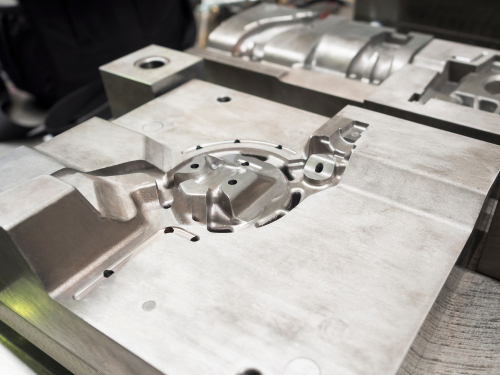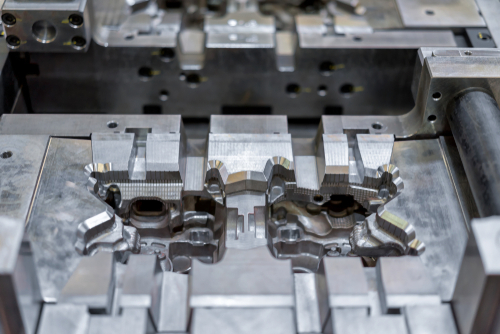 Machining encompasses a wide range of technologies as well as techniques. Machining can be defined roughly as the process of eliminating materials from a single workpiece with a power-driven machine tool to shape the piece into a planned design. Most metal parts necessitate some form of machining in the process of manufacturing. Materials, like rubber, plastic, as well as paper goods, are usually fabricated through different machining processes, too.
Machining encompasses a wide range of technologies as well as techniques. Machining can be defined roughly as the process of eliminating materials from a single workpiece with a power-driven machine tool to shape the piece into a planned design. Most metal parts necessitate some form of machining in the process of manufacturing. Materials, like rubber, plastic, as well as paper goods, are usually fabricated through different machining processes, too.
During component manufacturing. an array of processes are required to remove the excess material. Machining does the opposite of what 3D printing does; unlike bringing the material together in order to form a part, it carves objects out of solid blocks. In the process, machining also achieves the preferred form, although the methods are dissimilar. For a simpler explanation, think of machining as a form of sculpting, as opposed to additive manufacturing that is a bit like laying bricks upon one another.
In the realm of manufacturing, cast components are seldom ready to go straight out of the steel mold. Often, secondary shops of foundries are tasked with machining die cast components to make sure they meet the desired shape, design, as well as precision. Machine shos also implement characteristics that are not castable.
There are several types of tools used for machining, either alone or in combination with other tools at different steps of manufacturing to achieve the intended component geometry. The following techniques are among the common machining processes in use even today.
Milling
The milling process uses rotating cutters for removing the material from the workpiece. A milling machine has a movable table, upon which it is mounted. The cutting tools are fixed and the table of the machine moves the material, whereby the preferred cuts can be created. This is how it works in most milling equipment units. Other such units have both cutting tools and table as movable implements.
A milling machine can perform operations such as planning, rebating, cutting, die-sinking, routing, and other intricate tool-paths, which make it a flexible equipment unit in a machine shop. Milling machines provide flexible operations and require low maintenance cost; as they usually have a glitch-free and long life, the return on investment is high.
Milling is applied ideally as a secondary process to a workpiece that is already machined. It helps in defining features and works as a ‘finishing coat’. Use it as a secondary process in order to add features like holes, pockets, slots, and contours.
Boring
Also known as internal turning, boring is used to increase an existing hole’s inside diameter. The hole is usually drilled, or it may be cored in a metal casting. The boring process achieves three things, and they are as follows.
- Sizing: The process makes the size and finish of the hole appropriate.
- Straightness: It will straighten the initially cast or drilled hole.
- Concentricity: The process will make it concentric, with its outside diameter inside the accuracy limits of the holding or chuck device. For the best concentricity, the outside diameter’s turning and inside diameter’s boring is performed in a set-up, that is, sans moving the work amid operations.
Drilling
Drilling is the process of creating or refining the holes by bringing a single rotating cutting instrument into contact with the solid piece. Milling machine or lathe is also used to perform drilling. It  occurs as cylindrical holes are made in a solid piece of material with a drill bit. It is often used to make sure stability and accuracy. Drilling is one of the significant machining techniques since the holes being made are often meant to aid in assembly.
occurs as cylindrical holes are made in a solid piece of material with a drill bit. It is often used to make sure stability and accuracy. Drilling is one of the significant machining techniques since the holes being made are often meant to aid in assembly.
The drill bits feature a couple of spiral channels, which run up the bit’s shaft. Called the ‘fluting’, it carries the swarf or chips out of the hole when the bit progresses into the piece being worked on.
Tapping
The process of cutting a thread within a hole, so that a bolt or capscrew can be threaded into it, is called tapping. It is also used for making thread upon nuts. It can be performed on the lathe either by hand or power feed. Irrespective of the process, the hole has to be drilled with the appropriate size tap drill as well as chamfered at the end.
Tapping offers economical and productive threading, particularly for smaller threads, via reduced machine downtime, superior cutting speeds as well as longer tool life. It is an easy, popular and very efficient manufacturing process, covering the most common thread profiles as well as suitable for all types of machine types with non-rotating and rotating components.
Machining at Pacific Die Casting
A lot goes into machining a part that is precise, perfectly smooth, and functional. The machine shop at Pacific Die Casting is equipped to perform all the machining tasks mentioned above and more tasks, including pressure testing and sanding. Machining process necessitates experience and attention to detail. Our machinists have all the necessary tools and skills to machine a part to perfection.
